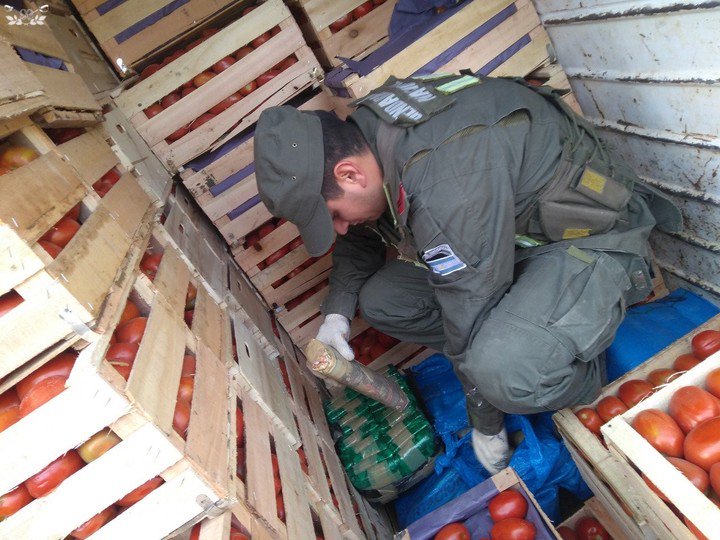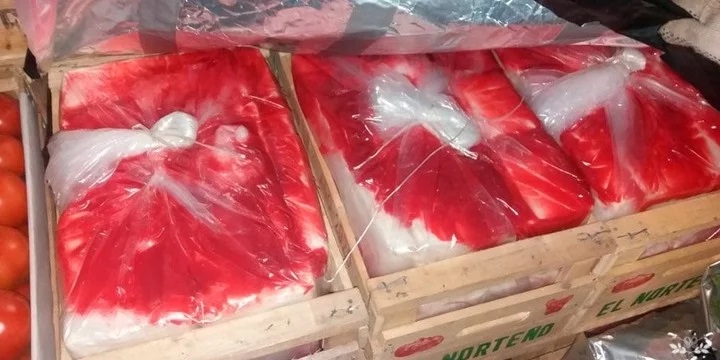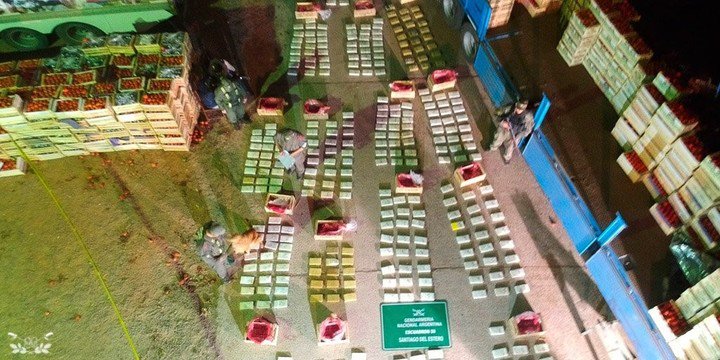RIO DE JANEIRO, BRAZIL – The “intelligence” data reported that a truck loaded with cocaine had left Colonia Santa Rosa, Argentina, on its way to the province of Buenos Aires. The police waited for it in El Naranjo, department of Rosario de la Frontera, and stopped it, certain that they would carry out a large confiscation.

However, the sniffer dogs did not signal anything and the police had no choice but to let it go. Only when the evidence was rechecked, did federal judge Gustavo Montoya order that it be again intercepted for review.
The Mercedes Benz truck with a trailer was detained for the second time in Santiago del Estero. It was stopped at a toll station on National Route 34, near the town of Fernandez and 48 kilometers from the capital of the province.
It was there that it was finally found that it was indeed carrying 408 kilos of Bolivian cocaine. The drug was distributed in 16 crates and consisted of 389 bricks. According to sources in the case, the drug detection dogs in Salta failed because the organization had taken precautions to mislead them.
The cocaine bricks, coated with lithium grease, had been placed in the center of the load and were entirely surrounded by crates of rotten tomatoes. “These two factors caused the sniffer dogs to fail,” sources of the case told Clarín.

The organization had also taken extra precautions. For one, the crates had been wrapped in aluminum foil to circumvent the scanners, and the truck driver was traveling with 100,000 pesos in cash, ready for a bribe if detected.
In addition to the driver – in whose house in La Plata (Buenos Aires province) almost three million pesos and 40,000 dollars were seized – the police arrested a fruit and vegetable businessman from Colonia Santa Rosa (Salta), identified as the leader of the gang.
This man, identified as Jesús “Tito” Navarro, and his wife were arrested in the province of Santa Fe, on their way to Buenos Aires. According to what the sources told Clarín, he was being investigated more than a year ago and they followed his trail to find the tomato truck.
“At the time of his arrest, he had a bag with more than 20 vehicle keys, about 110,000 pesos, and US$2,700,” the spokesmen said.
In Colonia Santa Rosa, where he owned three tomato and vegetable greenhouses, a storage facility was reached where two money-counting machines, satellite phones, and two vans were confiscated, one of them with a secret compartment in which US$84,000 had been kept.

According to sources, it is suspected that this money was going to Bolivia to buy more cocaine. Once the drug was purchased in that country, it was sent to Argentina in a van or through smugglers that carry the bricks in backpacks.
The main lead in the case points to Europe as the final destination of the drugs. Initially, the organization arrested after the seizure of the 408 kilos was in charge of all internal logistics and importing the drug from Bolivia, but the last phase would be in charge of another gang.
The investigation began a year and eight months ago by order of the Federal Court of Oran, supervised by Judge Montoya, who established that the drug traffickers were based in the village of Colonia Santa Rosa in Salta.
There, police officers intercepted more than 70 telephone lines and ten e-mail addresses. This is how it determined that on Tuesday afternoon there would be a transfer of cocaine from Salta to the province of Buenos Aires.
According to Security Minister Patricia Bullrich, this is “one of the biggest blows to cocaine trafficking”.
Source: Clarín

